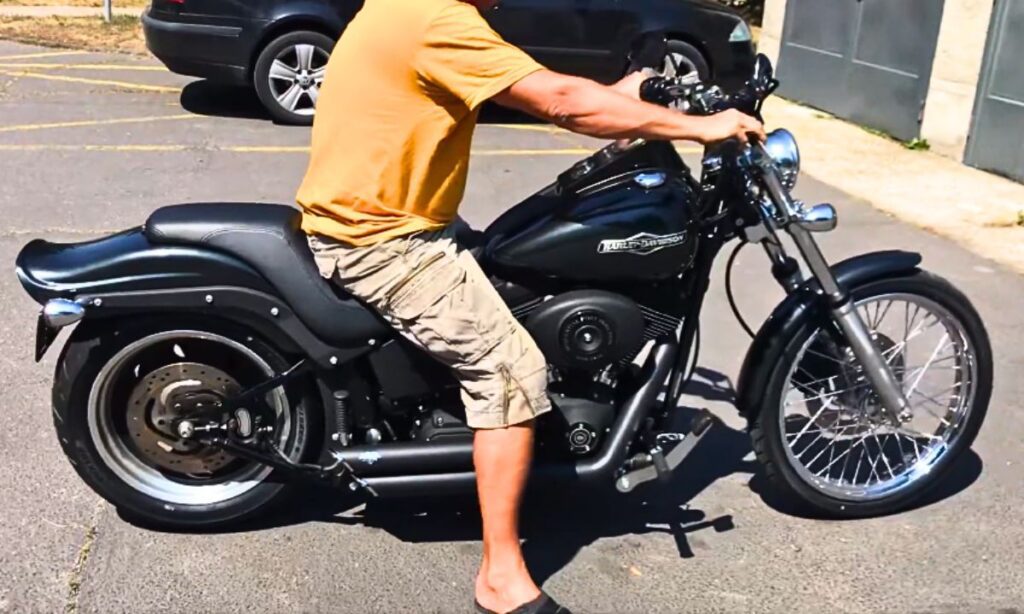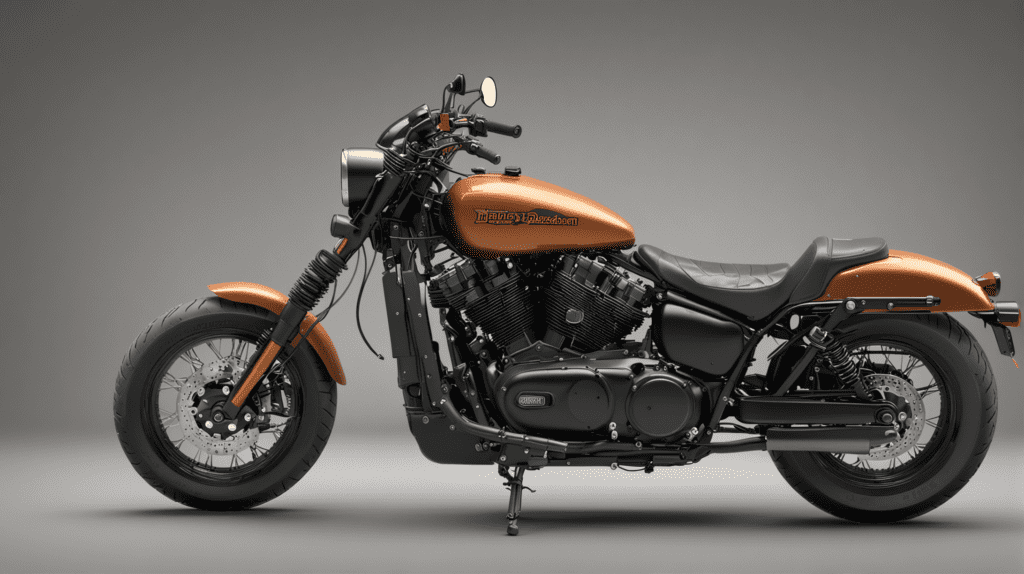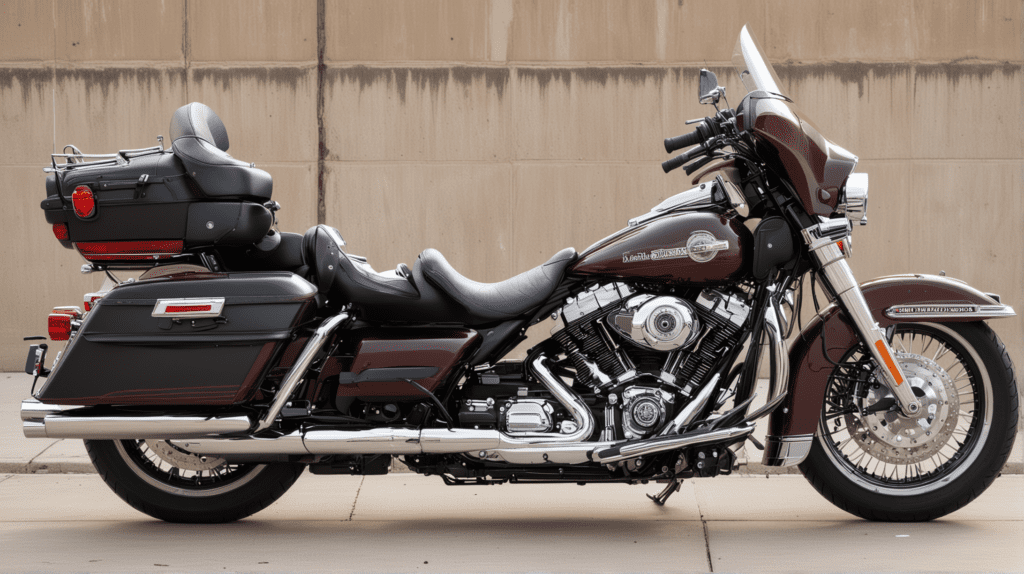Harley Davidson’s Night Train model, a staple in the motorcycle world, is known for its iconic design and powerful performance.
However, like all machines, it is not without its fair share of issues.
In this, we will dive into some of the most common problems associated with the Harley Davidson Night Train, offering insights and possible solutions.
Harley Davidson Night Train Problems
One common problem revolves around the bike’s vibration, especially at higher speeds, which can lead to discomfort during long rides.
There have been instances where excessive vibration has resulted in loose screws and fasteners, requiring frequent checks and maintenance.
The motorcycle has been known to face challenges with its charging system, leading to battery drain issues.
Lastly, the size can also be a disadvantage for some. It is a relatively heavy bike, making it difficult to handle for new or smaller riders.

1. Oil Leak From Breather
One common problem faced by riders is an oil leak from the breather. This issue can be due to a variety of factors and needs to be addressed promptly to prevent further damage.
The root cause of the oil leak may be due to overfilling the oil tank, faulty breather valves, clogged air filters, or worn piston rings.
When too much oil is added, it can get into the breather and then leak out.
On the other hand, a defective breather valve may fail to vent the crankcase properly, leading to excessive pressure and subsequent oil leaks.
The first step in dealing with this issue is to check and ensure the oil level is within the recommended range.
If it’s overfilled, you would need to drain some oil out. Next, inspect the breather valves and air filters.
If there’s dirt or debris blocking the air filters, clean or replace them. Similarly, if the breather valves are faulty, they should be replaced.
Lastly, if the problem persists despite your efforts, the issue could be with the piston rings.
Worn piston rings can allow oil to leak into the combustion chamber and eventually out of the breather.
In this case, you should consider taking your bike to a professional mechanic for further examination and repair.
2. Malfunctioned Oil Pump
One common issue that owners encounter is a malfunctioned oil pump. This critical component is responsible for circulating oil throughout the engine and any failure.
When the oil pump malfunctions, it typically presents as overheating, poor performance, or abnormal engine noises.
In some cases, the oil pressure light may also turn on. These symptoms should not be ignored as they could lead to catastrophic engine damage.
To address a malfunctioned oil pump, follow these steps:
I. Diagnosis
Use an oil pressure gauge to confirm whether the oil pump is indeed malfunctioning.
The Harley Night Train should maintain an oil pressure of around 10 PSI at idle and 30-38 PSI at 2000 RPM. If the readings are significantly lower, it’s likely the oil pump is failing.
II. Removal
Disconnect the battery, drain the engine oil, and remove the oil filter. You’ll then need to remove the engine’s outer cover to gain access to the oil pump.
III. Inspection
Inspect the oil pump for any visible damage or wear. The gears should not have excessive play or visible scoring. If they do, the pump is indeed faulty and needs to be replaced.
IV. Replacement
Install the new oil pump, ensuring that it is properly aligned with the engine. Once installed, replace the outer cover and the oil filter, and refill the engine with oil.
V. Testing
Start the engine and let it idle for a few minutes. Keep an eye on the oil pressure gauge and listen for any abnormal noises. If everything appears normal, the replacement was successful.
3. Idling Issue
An improperly idling engine can lead to inconsistent performance and even engine damage over time.
The root of the problem could be a myriad of things, from faulty spark plugs to an incorrect air-fuel mixture.
To troubleshoot, start by inspecting the spark plugs. If they’re worn out or covered in deposits, it’s time for a replacement.
Next, check the air cleaner. A clogged air cleaner can prevent the engine from getting the right air-fuel mixture, leading to idling issues.
If these steps don’t rectify the problem, you might need to adjust the idle speed.
Be cautious here – a too-high idle speed might make your bike harder to control, while a too-low idle speed can cause the engine to stall.
Usually, the idle speed should be around 1,000 RPM. You can adjust it by using the idle-speed adjustment screw, typically located near the air cleaner.
4. TSM Issue
Certain models have reported experiencing the Twin Cam 88 (TSC) engine bearing issue. This problem is more commonly referred to as the TSM issue.
The TSM issue essentially revolves around the failure of the inner cam bearings, which can lead to severe engine damage if not addressed promptly.
The inner cam bearings on certain Harley models, including the Night Train, are known to be somewhat flimsy, causing them to fail under the high-stress conditions of the Twin Cam 88 engine.
When these bearings fail, they can cause a catastrophic chain reaction within the engine, leading to severe damage and potentially even engine failure.
To fix the TSM issue, you’ll need to diagnose the problem. Listen for any abnormal noises coming from the engine, specifically a knocking or pinging sound.
If you hear this, it’s a clear sign that your inner cam bearings are failing. To replace the inner cam bearings, you’ll need to disassemble the engine.
This is a complex task, and it’s highly recommended that you have a professional mechanic perform this task if you’re not confident in your abilities.
Once the engine is disassembled, then you can replace the faulty inner cam bearings with new, more robust bearings.
After the new bearings are installed, reassemble the engine. It’s crucial to ensure that all parts are correctly installed and that the engine is properly timed to prevent any further issues.
Once the engine is reassembled, you should notice a significant decrease in engine noise and an overall improvement in performance.
5. Clanking Noise
One common problem that owners have reported is a clanking noise emanating from the engine. This can be an alarming sign, but understanding its potential causes is the first step towards troubleshooting.
The clinking noise might be caused by loose rocker box bolts, which hold the rocker arms in place.
If these bolts have loosened over time, they can cause the rocker arms to move irregularly, leading to a clanking or ticking sound.
To fix this, the bolts should be tightened to the manufacturer’s recommended torque levels. Another possibility is that the motorcycle’s primary drive could be out of alignment.
This can result from heavy use or an improper previous repair. The primary drive comprises the clutch, primary chain, and engine sprocket.
If these components are not aligned correctly, they can make contact with each other and produce a clanking sound.
Lastly, a clinking sound may also originate from the lifters, which are responsible for opening and closing the engine’s valves.
If the lifter clearance is not set accurately, it can lead to excessive movement and create a clanking noise.
6. Braking Issue
While the Night Train offers a smooth ride, the braking system, in some cases, may lack the desired responsiveness, resulting in longer stopping distances.
The original brake pads installed in these motorcycles are known to wear down quickly, leading to decreased brake performance.
Regular checking and replacement of brake pads is, therefore, essential to maintain optimal braking efficiency.
It’s generally recommended to replace brake pads every 20,000 miles, but this can vary depending on riding style and conditions.
Another problem may arise from the condition of the brake fluid. Over time, brake fluid absorbs moisture, which can degrade its performance and potentially cause damage to the brake system components.
As a rule of thumb, brake fluid should be replaced every two years or as specified in the motorcycle’s owner’s manual.
Lastly, brake disc problems, though less common, also occur. Warping or notching of the disc surface leads to decreased braking performance and a pulsing sensation when the brakes are applied.
Regular inspection of the brake discs for signs of wear or damage can help identify this problem early.
7. Electrical Problems
One of the common issues that owners encounter with the Night Train pertains to the electrical systems of the bike.
In some instances, the motorcycle may have problems starting due to electrical glitches.
This could be down to a faulty ignition switch or an issue with the starter motor. Check the ignition switch for any signs of wear or damage.
A multimeter is an invaluable tool in this situation, allowing you to test the continuity of the switch.
If the switch is in good working order, the next area to check is the starter motor.
You can identify issues with the starter motor by listening to a clicking sound when attempting to start the bike. This sound typically indicates a problem with the motor.
It’s also important to examine the bike’s wiring for any signs of fraying or damage.
Exposed wires can lead to electrical shorts, causing the motorcycle to perform inconsistently or not start at all.
If you notice any damage, it’s advisable to have the wiring repaired or replaced by a professional. Lastly, the battery’s health plays a critical role in the bike’s electrical performance.
Regularly check the battery’s voltage using a multimeter, and ensure it’s consistently above 12 volts.
If the battery frequently drops below this voltage, it might be time for a replacement.
Remember, always disconnect the battery before performing any electrical work on your motorcycle to avoid any potential safety hazards.
Harley Davidson Night Train Specs
| Category | Specification |
| Engine Details | |
| Type | 4v air-cooled V-twin, 5 gears |
| Size | 1580cc |
| Frame and Body | |
| Frame Type | Steel tube cradle |
| Bike Weight | 285kg |
| Suspension & Brakes | |
| Front Suspension | None |
| Rear Suspension | Preload |
| Front Brake | Single 292mm disc |
| Rear Brake | Single 292mm disc |
| Tyres | |
| Front Tyre Size | 80/90 x 19 |
| Rear Tyre Size | 160/70 x 16 |
| Fuel and Capacity | |
| Fuel Capacity | 18.9 litres |
| Average Consumption | 38 mpg |
| Tank Range | 146 miles |
| Seat and Dimensions | |
| Seat Height | 660mm |
| Performance | |
| Max Power | 67 bhp |
| Max Torque | 82 ft-lb |
| Top Speed | 118 mph |
| 1/4 Mile Acceleration | 13.2 secs |
| Warranty & Service | |
| Warranty Term | Two year unlimited mileage |
| Costs & Insurance | |
| Annual Road Tax | £111 |
| Annual Service Cost | £80 |
| New Price | – |
| Used Price | £9,500 |
| Insurance Group | 16 of 17 |
Harley Davidson Night Train User Reviews
By Marco
“This bike is what I was looking for and has exceeded all my expectations. It’s like riding a pissed off bulldog that still listens to commands.”
By Tony
“Great looking bike very comfortable and cool” Source: motorcyclenews.com

Tonmoy, the brains behind the influential motorcycle-focused website, TwoWheller.com, is a dedicated and passionate advocate for biking culture. Born and raised in a family of motorcycle enthusiasts, his love for two-wheeled transportation was ignited at an early age. His commitment to providing in-depth reviews and helpful tips for riders has established him as a respected figure in the motorcycle community.

